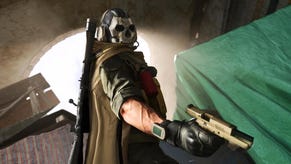Meet the Player Protesting Call of Duty: Modern Warfare's Violence by Playing as a Pacifist
This artist's act of protesting the violence in the Modern Warfare series is playing them without hurting a soul.
This article first appeared on USgamer, a partner publication of VG247. Some content, such as this article, has been migrated to VG247 for posterity after USgamer's closure - but it has not been edited or further vetted by the VG247 team.
Kent Sheely was laying on the edge of an abandoned hotel rooftop: frozen, anxious, and ready. He was waiting for his target, Russian arms dealer and revolutionary Imran Zakhaev, in the nuclear remnants of Pripyat. Sheely held his sniper rifle steady as Zakhaev arrived via an SUV in a parking lot in the distance, keeping his marker steady on his target's head. He hesitated, trying to think of anything he could do to complete the mission without directly killing Zakhaev, before letting a bullet fly taking Zakhaev's arm clean off.
Sheely is a game developer, experimental artist, and activist currently living in Los Angeles. He's played through 2007's Call of Duty 4: Modern Warfare back in 2016, and is currently playing through 2019's Modern Warfare campaign as a pacifist on his YouTube channel. He goes by three rules as he plays through one of the most violent shooters in gaming as non-violently as possible.
- He won't harm infantry or vehicles.
- He'll do whatever he can to avoid hurting anyone if he has to use weapons or explosives.
- He won't break either of the above rules unless the game's programming makes it impossible to proceed, even after he tries to exploit that programming.
"The levels that are the most successful are ones where you have a whole group of people and it's just a big battlefield. There are a few levels that demand more of you," Sheely tells me over Skype. "The one that always sticks out in the first game is the one where you're a sniper sent to take someone out. There's no way to get past it and no allies to help you."
He's talking about the classic 2007 Modern Warfare mission "All Ghillied Up" in which you flashback to the assasination of a Russian nationalist. The mission had him behind the scope and would not proceed until he finally pulled the trigger. "I've actually been surprised at the other parts of the game, most of which just give up because it wants things to move forward," Sheely says. "It'll just kind of complete objectives for you if you just sit there long enough without taking action."
Before this year's videos, Sheely did similar experiments, including one where he overlaid first-person shooter character models over everyday photos to showcase the implicit violence present in the genre. Experiments like that and his pacifist runs are done to raise questions about how we normalize violence in gaming.
"I'd never played a Modern Warfare game and I wanted to try it out," Sheely says of how he got started with his first pacifist run. "I naturally find weird ways to play games and I noticed how the AI moved and I wondered if I could get through the game without shooting this weapon and that turned into a valid way to play. It started out as a rejection of the games violence through a different way to play. Then it evolved as I played and figured out tricks to get through areas where the game really wanted me to kill someone."
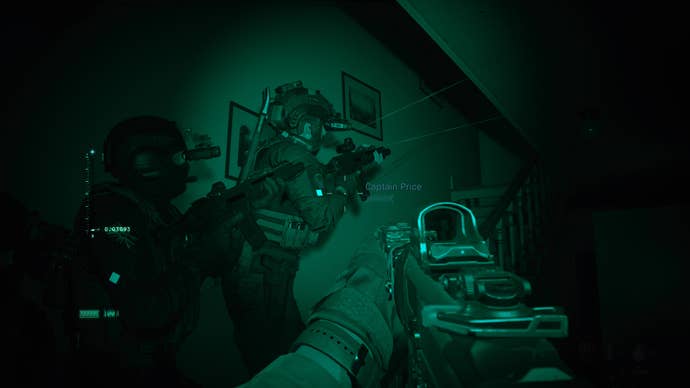
Sheely went through the pacifist experiment to test the original Modern Warfare's design and challenge the themes of violence and war propaganda he believes are present in both games. "I've got a lot of issues with the game politically," Sheely says referencing Modern Warfare's inclusion of white phosphorus as a multiplayer killstreak and the highway of death, an American war crime the game attributes to Russia. "It's how this whole thing came about with me rejecting the violence of the game as a type of performance."
These controversies weren't a part of Sheely's mindset when he first did his pacifist run through the 2007 entry in the Modern Warfare series in 2016. Even without the recent controversies, Sheely believes there were several other reasons to protest the violence that the original Modern Warfare included.
"It was the place video games were at the time," Sheely says. "America's Army and a lot of other games glorified the military without directly trying to recruit you." He also mentions licensing deals some first-person shooter development studios have made with gun manufacturers to use their weapons in-game. "So it's all kind of tied together," Sheely adds. "That's why I think of it as propaganda even if they aren't trying to recruit you."
Activision has refused to comment on whether or not it pays gun manufacturers to use their weapons in various Call of Duty games. The issue got mainstream attention after the shooting at Sandy Hook Elementary in 2012, and as a result, companies like EA said they would stop working with gun manufacturers. However, many developers, including EA and Activision, still use real weapon models in-game to promote "authenticity."
Outside a handful of moments similar to the assassination in "All Ghillied Up," Sheely has found that the majority of both games can be bypassed without killing enemies directly. He's found ways to manipulate non-playable characters to do things for him and skip segments altogether without anyone getting hurt.
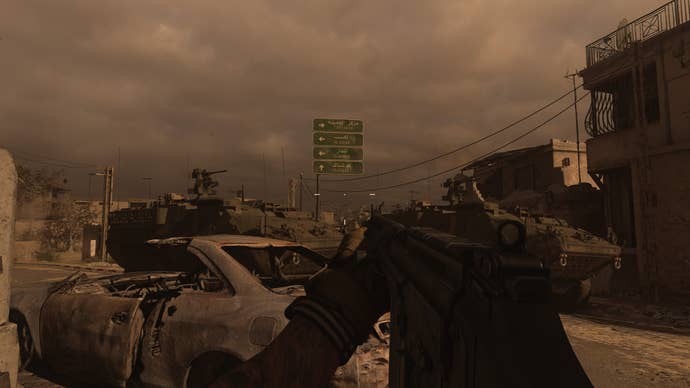
Both Modern Warfare games share a similar mission structure with gunfights broken up into small linear areas and some larger battlefields. Most have the player character fighting alongside NPCs who chip away at enemy forces slowly, letting the player get the majority of the action.
"There are a few places where the game tries to convince you to move and take action," Sheely says. "It doesn't want you to ever get cornered so it lets you push your teammates around as needed. There are a few places where I would push my allies into danger, forcing them to defend themselves where they normally wouldn't."
Sheely mentions moments from both games where a machine gunner pins you and your squad down and your allies wait for you to clear the way. Instead of becoming the hero and lobbing a grenade through the window, Sheely opted to push his teammates into action. He used his character model to physically push his computer controlled squadmates, hoping the games' AI would jump into action and fight when caught in enemy fire. The strategy turned out to be one of the primary ways Sheely got through the game, using NPCs to do the dirty work for him.
He found missions where certain NPCs would be completely invulnerable, giving him an easy way to slowly progress through a level. Other times NPCs would die the instant he pushed them into enemy fire. Sheely also found that he could simply run through some sections of each game and skip combat sequences entirely, never even aiming his gun while sprinting through the rubble.
"One mission I did most recently is an attack on an airfield and the instructions come up on screen tell you to bring up a tablet and fly a little remote-controlled plane with explosives on it," Sheely says of his ongoing run of this year's Modern Warfare. "It wants you to blow up these helicopters that are in your way. I just ran up as far as I can and just pulled up my tablet. My allies ran up to help me and progress the mission no matter what was happening around me."
No matter what Sheely did in his pacifist run, he couldn't guarantee that his allies or enemies he was fighting, wouldn't kill others. At one point in an early mission in 2019's Modern Warfare, Sheely watched civilians get executed by terrorists in a bombing of Piccadilly Circus in London. He couldn't help until an NPC police officer intervened later on.
"A theme in my runs is that moral push and pull, the trolley problem," Sheely says. "I'm taking direct action that's putting someone else in danger. That goes both ways, like in a hostage scenario, is it inherently wrong to let someone else die when you could've taken action?"
Sheely also says that the game does try to present some of these questions itself, although it always overshadows the moments with the spectacle of war. Hostage situations that don't punish you for letting innocents die and cinematic combat sequences where you can take enemies down in non-lethal ways are scattered across both campaigns. Neither are ever used to question the violence they bring on.
"It's a little bit tone-deaf in my opinion," he says. "There are good setpieces in motion, but at its core, it's about having an exciting experience. I don't think most people are interested in the moral quandaries they set up, it's just the shock value."
Sheely is posing those moral quandaries to viewers himself, "I'm presenting a question, I don't think there is an answer. That's why the trolley problem exists. What I'm doing with Modern Warfare is all or nothing, and I'm choosing nothing," Sheely says. "I'm not making any moral choices, I'm just seeing what happens when you take the least active approach to the game."
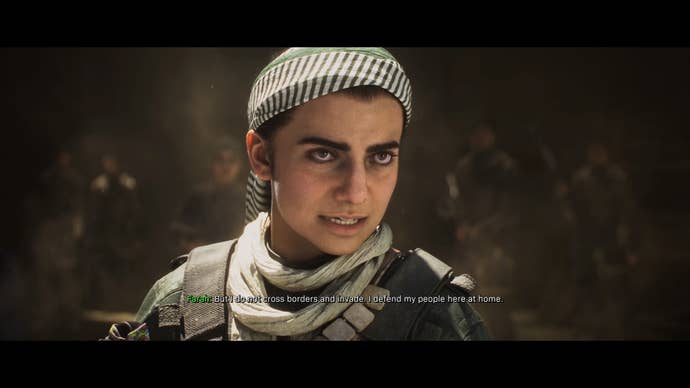
During every hostage situation, Sheely chooses not to engage, which almost always leads to the death of those in captivity. It's a hard thing to watch, but Sheely wants viewers to think about Call of Duty outside the violent context that Infinity Ward provides. Although he doesn't know if viewers are getting the message.
His new videos haven't gained much traction, but the comment sections of his runthrough of the 2007 game are flooded with jokes and comments commending his patience. The ones that stand out the most to Sheely reject the concept of his run altogether. "The most vocal people that I've seen commenting are gamers that are upset that I'm playing it wrong," Sheely says. "They try to take some moral high ground."
Sheely still thinks his approach is impactful and thought provoking, even if the biggest impact he's witnessed is the one on his way of thinking. "What began as a superficial challenge in [a] game otherwise intended for escapism turned into a deeply philosophical experience for me, and I think the end result is worth scrutinizing," Sheely wrote in 2016 after completing his first pacifist run of Modern Warfare. "I refuse to accept that there is any form of interactive media that is not worth exploring and pushing to its limits, even if that means taking the exact opposite approach and just stepping back to let things play out as they will. You can decide for yourself what to make of the results."
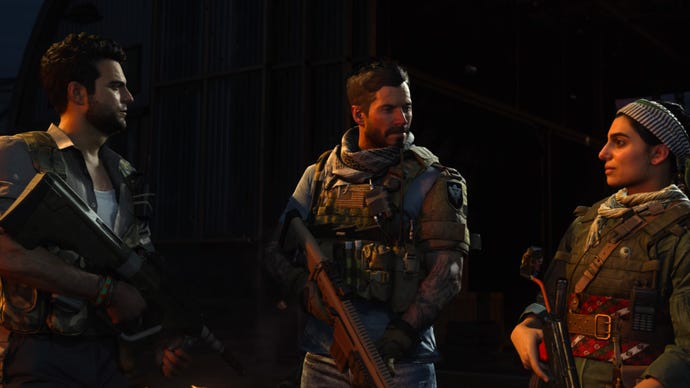



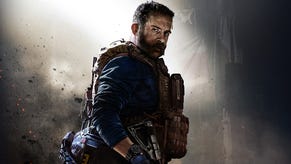

.jpg?width=291&height=164&fit=crop&quality=80&format=jpg&auto=webp)
